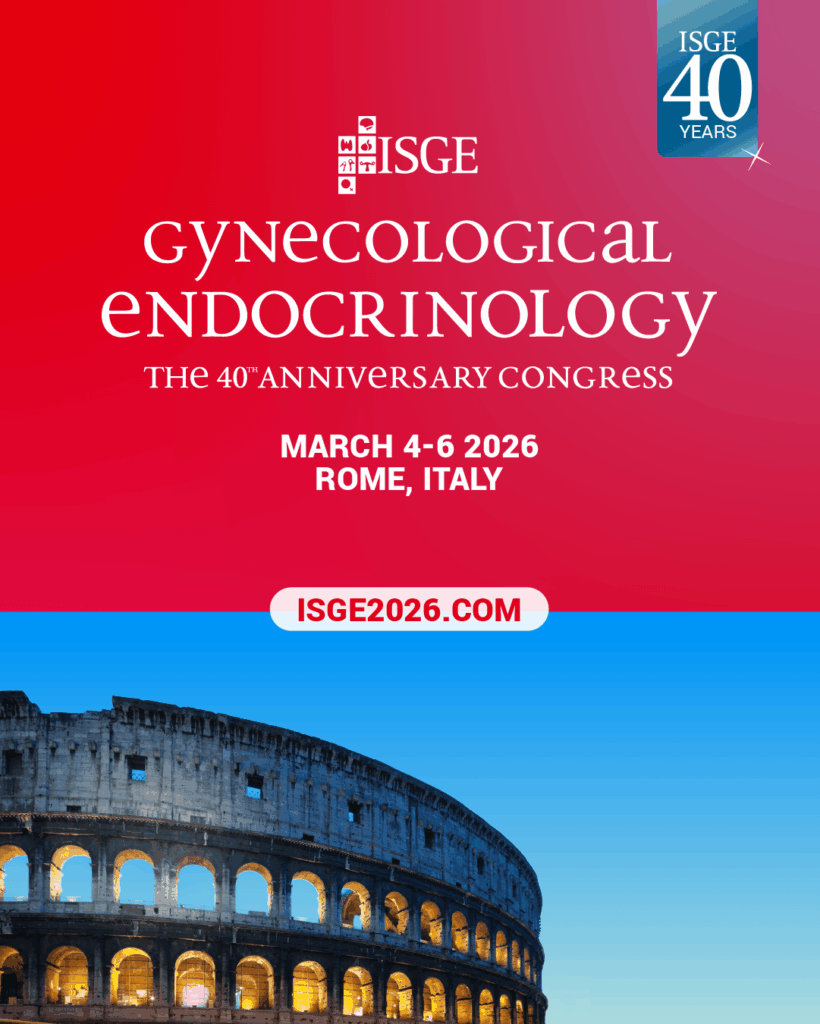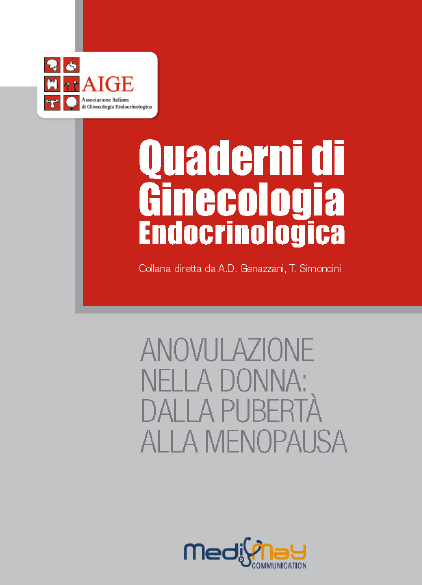-
Alessandro D. Genazzani, Christian Battipaglia, Tabatha Petrillo, Chiara Alberti,Beatrice Patrizi, Veronica Tomatis, Tommaso Simoncini, Andrea R. Genazzani
HIE (hepatic insulin extraction) index in overweight/obese PCOS patients with or without familial diabetesGynecological and Reproductive Endocrinology and Metabolism 2022; 3(1):57-68
DownloadAbstract
Polycystic ovary syndrome (PCOS) is a complex reproductive disease characterized not only by altered menstrual frequency, abnormal ovulation or excess of androgens but, frequently, also by insulin resistance (IR). IR occurs as a result of reduced peripheral sensitivity and compensatory hyperinsulinemia, especially at the fat and skeletal muscle levels. Since the liver is responsible for clearance of insulin, but not C-peptide, we evaluated the hepatic insulin extraction (HIE) index (computed as the insulin-to-C-peptide ratio), measured throughout the oral glucose tolerance test (OGTT), as a means of assessing the dynamics of insulin synthesis/degradation in a group of overweight/obese PCOS patients (n=53).
PCOS patients with familial diabetes (n=31, 59.6%) showed higher plasma ALT and AST levels and a higher incidence of baseline insulin levels > 12 μU/ml, this latter finding considered an index of IR. These higher AST and ALT levels also occurred when considering patients according to insulin response to the OGTT. HIE profiles were found to have a different shape in PCOS with familial diabetes than in PCOS without familial diabetes. Patients in the latter group still showed the presence of HIE decrease within 60 minutes of the OGTT as evidence of normal hepatic insulin clearance; on the contrary, hepatic insulin clearance was impaired in PCOS with familial diabetes.
In conclusion, dynamic evaluation of HIE disclosed that in overweight/obese PCOS patients, familial predisposition to diabetes impairs hepatocyte function and the hepatic degradation of insulin. This impairment reinforces and maintains the IR and compensatory hyperinsulinemia in PCOS. These findings on HIE indirectly suggest that higher HIE might be due to a reduced liver expression/function of the insulin degrading enzyme. -
Libera Troìa, Stefano Luisi
Estro-Progestins and Pain Relief in EndometriosisEndocrines 2022, 3(2), 349-366
DownloadAbstract
Endometriosis is a benign, hormone-responsive chronic disease that affects women of reproductive age; long-term treatment to balance satisfactory tolerability with clinical efficacy is necessary for these patients. The first-line therapy for endometriosis is predominantly medical treatment, in order to improve symptoms or prevent post-surgical disease recurrence. Multiple factors including age and women preference, pain severity, and endometriosis stage must be considered in the choice of the most suitable therapy. Estrogen-progestogins are generally used as first-line hormone therapies among different medical options currently effective for endometriosis management. Several studies have shown that they are able to improve pain symptoms in most patients, are well tolerated, and are inexpensive. Combined hormonal contraception treatment, administered cyclically or continuously, with different types of hormones and route of administration, results in clinically noticeable decrease in dysmenorrhea, noncyclic pelvic pain, dyspareunia, and recurrence rate after surgery, and also in quality of life improvement.
-
Alessandro D. Genazzani, Christian Battipaglia, Elisa Semprini, Melania Arnesano, Fedora Ambrosetti, Alessandra Sponzilli, Veronica Tomatis, Tabatha Petrillo.
Familial Diabetes in Obese PCOS Predisposes Individuals to Compensatory Hyperinsulinemia and Insulin Resistance (IR) Also for Reduced Hepatic Insulin Extraction (HIE). Endocrines 2022, 3, 296–302
DownloadAbstract
Background: Polycystic ovary syndrome (PCOS) is a frequent reproductive disease characterized by hyperandrogenism, oligo /anovulation, and polycystic aspects at ultrasound. In these last years, a body of evidence disclosed the frequent occurrence in PCOS patients of insulin resistance (IR) and compensatory hyperinsulinemia.
Aim: To evaluate whether any relationship exists between IR, compensatory hyperinsulinemia and familial predisposition to diabetes.
Methods: A group of overweight/obese PCOS patients (n = 84) was selected from our Clinic database according to the Rotterdam criteria and the following parameters were extracted from the database: insulin, C Peptide, aspartate amino transferase (AST), alanine amino transferase (ALT), HOMA (Homeostasis Model Assessment) index, total cholesterol, LDL (Low Density Lypoprotein), HDL (High Density Lypoprotein), and body mass index (BMI). The presence and absence of diabetes among first grade relatives (parents and/or grandparents) were also considered. The Hepatic Insulin Extraction (HIE) index was computed as a ratio between insulin and C-Peptide plasma levels.
Results: PCOS patients with familial diabetes showed higher levels of ALT, AST, HOMA index, and HIE. Baseline insulin levels above 12 μU/mL were more frequently observed in PCOS with familial diabetes. HIE index, ALT, and AST were higher in these latter PCOS patients than in PCOS without diabetic first grade relatives, sustaining the hypothesis of an impaired liver clearance of insulin in the case of familial diabetes.
Conclusions: According to our study, the presence of anamnestic evidence of familial diabetes together with baseline levels of insulin higher that 12 µIU/mL and elevated transaminase levels should be considered as a consistent clinical suspect of liver impairment that might trigger compensatory hyperinsulinemia and lead to NAFLD and liver steatosis. -
Anuja Dokras
Heart health in polycystic ovary syndrome: time to act on the dataFertil Steril 2022;117:885–6
DownloadAbstract
Polycystic ovary syndrome (PCOS), first described over 80 years ago, is a chronic condition with gynecologic, metabolic, and psychologic manifestations. Both hyperandrogenism and insulin resistance are associated with the high prevalence of cardiometabolic risk factors described in this population. Although robust data in reproductive-age women demonstrate a high rate of obesity, impaired glucose tolerance, hypertension, dyslipidemia, and metabolic syndrome, studies show mixed results in the adolescent and menopausal age groups. There is emerging evidence to support an association between PCOS and nonalcoholic fatty liver disease and obstructive sleep apnea, conditions known to influence cardiovascular disease (CVD) outcomes. Studies from different world regions show an increased risk of subclinical atherosclerosis, measured by a variety of modalities, especially in reproductive-age women. Similarly, there is increasing evidence for a higher prevalence of CVD events, such as stroke, myocardial infarction, and ischemic heart disease. Over the past decade, a number of medical society guidelines have recommended screening women with PCOS for cardiometabolic risk factors for the primary prevention of CVD. This series of Views and Reviews highlights the urgency to implement these guidelines and invest in identifying newer therapies for comprehensively managing the symptoms of PCOS while lowering long-term cardiometabolic risk.
-
Joanne Michelle D. Gomez, Katherine VanHise, Nina Stachenfeld, Jessica L. Chan, Noel Bairey Merz, Chrisandra Shufelt
Subclinical cardiovascular disease and polycystic ovary syndromeFertil Steril 2022;117:912–23
DownloadAbstract
Polycystic ovary syndrome (PCOS) impacts approximately 6%–10% of women worldwide, with hallmark features of hyperandrogenism, irregular menses, infertility, and polycystic appearing ovaries on ultrasound. In addition, PCOS is associated with several endocrine and metabolic disorders, including obesity, insulin resistance and diabetes mellitus, hypertension, dyslipidemia and metabolic syndrome, which all increase the risk for subclinical cardiovascular disease (CVD), the presence of altered vascular endothelium without overt CVD. In this review, we summarize the most recent literature regarding subclinical CVD in women with PCOS, including markers such as flow-mediated dilation, arterial stiffness, coronary artery calcium scores, carotid intima-media thickness and visceral and epicardial fat.
-
Sylvia Kiconco, Chau Thien Tay, Kate Louise Rassie, Ricardo Azziz , Helena J. Teede, Anju E. Joham
Where are we in understanding the natural history of polycystic ovary syndrome? A systematic review of longitudinal cohort studiesHuman Reproduction, 6: 1255–1273, 2022Abstract
STUDY QUESTION: What is the natural history of reproductive, psychological and oncological features in women with polycystic ovary syndrome (PCOS) in comparison to those without PCOS across the life course?
SUMMARY ANSWER: Existing longitudinal data on changes in reproductive, psychological and oncological features in PCOS are inadequate and conflicting, but the limited evidence suggests that total testosterone (T) and dehydroepiandrosterone sulphate (DHEAS) levels decline more significantly in women with PCOS than in those without PCOS, and the risk of gestational diabetes is higher in pregnant women with PCOS compared to their counterparts without
PCOS. WHAT IS KNOWN ALREADY: The progression of reproductive, psychological and oncological features in PCOS remains unclear, which limits prevention and early diagnosis strategies across the lifespan. Understanding the natural history of PCOS is one of the overarching priorities in PCOS research.
STUDY DESIGN, SIZE, DURATION: This is a systematic review of longitudinal cohort studies with a narrative presentation of findings. Databases MEDLINE, EMBASE, Ovid PsycInfo, CINAHL PLUS and EBM reviews were searched between 15 January 2020 and 11 February 2021 with no language restrictions. Only studies published from the year 1990 to February 2021 were included.
PARTICIPANTS/MATERIALS, SETTING, METHODS: In line with current guidelines for the assessment and management of PCOS, we included studies where participants were females with PCOS diagnosed according to the 2003 Rotterdam or the 1990 National Institutes of Health (NIH) consensus criteria.
MAIN RESULTS AND THE ROLE OF CHANCE: A total of 21 longitudinal studies including 62 123 participants over four continents reported reproductive, psychological and/or oncological outcomes. Participants were females aged between 15 and 49 years at baseline, with follow-up periods ranging from 4 weeks to 32 years. Consistent evidence based on limited studies suggests that total T and DHEAS levels decline to a greater degree in women with PCOS compared to those without PCOS, and the risk gestational diabetes is higher in women with PCOS than in those without PCOS. Evidence reporting changes over time in the majority of the remaining outcomes was unclear due to conflicting and/or insufficient information.
LIMITATIONS, REASONS FOR CAUTION: There was extreme heterogeneity between studies in terms of study setting, population characteristics, follow-up period, effect measures used and laboratory testing approaches. WIDER IMPLICATIONS OF THE FINDINGS: Understanding the natural history of PCOS and changes in diagnostic, reproductive, psychological and oncological features of PCOS across the lifespan is still a challenge and the existing literature is both limited and conflicting. It is important that future long-term prospective longitudinal studies are conducted in unselected and well-characterized populations -
Mirjana Sˇumarac-Dumanovic, Danica Stamenkovic´-Pejkovic, Danka Jeremic, Janko Dumanovic, Vesna Mandic-Markovic , Milos Zarkovic, Dragan Micic
Age, Body Mass Index, and Waist-to-Hip Ratio Related Changes in Insulin Secretion and Insulin Sensitivity in Women with Polycystic Ovary Syndrome: Minimal Model AnalysesInternational Journal of Endocrinology Volume 2022, Article ID 6630498
DownloadAbstract
Insulin resistance is believed to be an integral component of the polycystic ovary syndrome (PCOS). Beta (ß) cell dysfunction is also found in PCOS. In the study, we determined the in‹uence of age, body mass index (BMI), and waist-to-hip ratio (WHR) on insulin response to oral glucose load (OGTT) and on insulin sensitivity (Si) and ß-cell function in young women with PCOS. One hundred fourteen patients with PCOS and 41 controls with normal basal plasma glucose were studied. A 75-g OGTT was performed to determine glucose tolerance and insulin response. Insulin sensitivity and ß-cell function were studied using a modi™ed frequently sampled IV glucose tolerance test (FISGTT) to determine the acute insulin response (AIRG), as well as Si by minimal model analysis. Si was decreased in PCOS women (2.49 0.18 vs. 3.41 ± 0.36, p < 0.05), but no di¢erence in AIRG existed between the PCOS and control group (75.1 ± 4.6 vs. 63.4 ± 4.6, p < 0.05). BMI and WHR correlated negatively with Si (r ¬ −0.43; r ¬ −0.289, p < 0.001, respectively), but not with AIRG (r¬ 0.116; r ¬ −0.02, p > 0.05, respectively). Increasing age correlated negatively with AIRG (r¬ −0.285, p < 0.001). ¬ere was a signi cant interaction between disease (PCOS), BMI, and WHR on Si as well as between age and PCOS on AIRG. ¬us, patients below the age of 25 with PCOS showed enhanced AIRG (89.5 ±7.1 vs. 65.1±6.7, p < 0.05) and decreased Si (2.43 ±0.25 vs. 4.52±0.62, p < 0.05) compared to age-matched controls. In conclusion, these data suggest that not all patients with PCOS have basal and stimulated hyperinsulinemia, insulin resistance, and impaired glucose tolerance. Based on these data in young PCOS subjects, the development of insulin resistance and T2DM may be prevented with appropriate treatment strategies..
Abstracts selezionati
-
Alessandro D. Genazzani, Christian Battipaglia, Tabatha Petrillo, Chiara Alberti,Beatrice Patrizi, Veronica Tomatis, Tommaso Simoncini, Andrea R. Genazzani
HIE (hepatic insulin extraction) index in overweight/obese PCOS patients with or without familial diabetesGynecological and Reproductive Endocrinology and Metabolism 2022; 3(1):57-68
Download -
Libera Troìa, Stefano Luisi
Estro-Progestins and Pain Relief in EndometriosisEndocrines 2022, 3(2), 349-366
Download -
Alessandro D. Genazzani, Christian Battipaglia, Elisa Semprini, Melania Arnesano, Fedora Ambrosetti, Alessandra Sponzilli, Veronica Tomatis, Tabatha Petrillo.
Familial Diabetes in Obese PCOS Predisposes Individuals to Compensatory Hyperinsulinemia and Insulin Resistance (IR) Also for Reduced Hepatic Insulin Extraction (HIE). Endocrines 2022, 3, 296–302
Download -
Anuja Dokras
Heart health in polycystic ovary syndrome: time to act on the dataFertil Steril 2022;117:885–6
Download -
Joanne Michelle D. Gomez, Katherine VanHise, Nina Stachenfeld, Jessica L. Chan, Noel Bairey Merz, Chrisandra Shufelt
Subclinical cardiovascular disease and polycystic ovary syndromeFertil Steril 2022;117:912–23
Download -
Sylvia Kiconco, Chau Thien Tay, Kate Louise Rassie, Ricardo Azziz , Helena J. Teede, Anju E. Joham
Where are we in understanding the natural history of polycystic ovary syndrome? A systematic review of longitudinal cohort studiesHuman Reproduction, 6: 1255–1273, 2022 -
Mirjana Sˇumarac-Dumanovic, Danica Stamenkovic´-Pejkovic, Danka Jeremic, Janko Dumanovic, Vesna Mandic-Markovic , Milos Zarkovic, Dragan Micic
Age, Body Mass Index, and Waist-to-Hip Ratio Related Changes in Insulin Secretion and Insulin Sensitivity in Women with Polycystic Ovary Syndrome: Minimal Model AnalysesInternational Journal of Endocrinology Volume 2022, Article ID 6630498
Download






